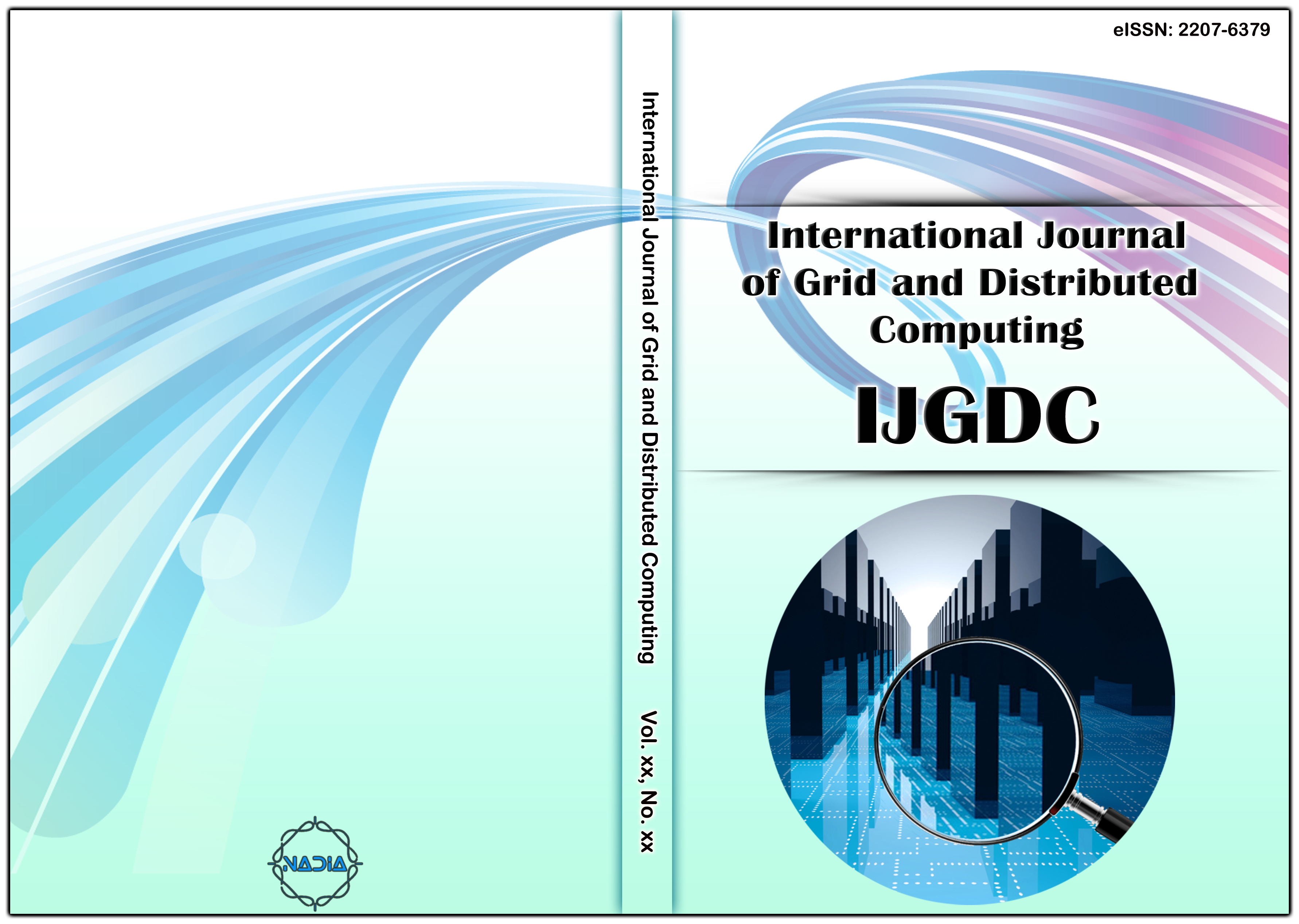[1] Anitha, A. “Prediction of Crime Rate Using Data Clustering Technique”. In: Das K., Bansal J., Deep K., Nagar A., Pathipooranam P., Naidu R. (eds) Soft Computing for Problem Solving. Advances in Intelligent Systems and Computing, vol 1048, (2020).
[2] Sotiropoulos, D. N. Pournarakis, D. E. and Giaglis, G. M. “A genetic algorithm approach for topic clustering: A centroid-based encoding scheme”. 2016 7th International Conference on Information, Intelligence, Systems & Applications (IISA), Chalkidiki, Greece, 2016, pp. 1-8.
[3] Jha, G. Ahuja, L. and Rana, A. “Criminal Behaviour Analysis and Segmentation using K-Means Clustering”. 2020 8th International Conference on Reliability, Infocom Technologies and Optimization (Trends and Future Directions) (ICRITO), Noida, India, 2020, pp. 1356-1360, doi: 10.1109/ICRITO48877.2020.9197791.
[4] Boratyn, G. M. Datta, S. and Datta, S. “Biologically Supervised Hierarchical Clustering Algorithms for Gene Expression Data”, 2006 International Conference of the IEEE Engineering in Medicine and Biology Society, New York, NY, USA, pp. 5515-5518, doi: 10.1109/IEMBS.2006.260308.
[5] Li, J. and Lewis, H. W. ‘Fuzzy Clustering Algorithms — Review of the Applications’, 2016 IEEE International Conference on Smart Cloud (SmartCloud), New York, NY, USA, 2016, pp. 282-288, doi: 10.1109/SmartCloud.2016.14.
[6] Kao, Y. and Cheng, K. “An ACO-Based Clustering Algorithm”, In: Dorigo M., Gambardella L.M., Birattari M., Martinoli A., Poli R., Stützle T. (eds) Ant Colony Optimization and Swarm Intelligence. ANTS 2006. Lecture Notes in Computer Science, Springer, Berlin, Heidelberg, vol 4150, (2006), https://doi.org/10.1007/11839088_31.
[7] Kuo, R.J., Zulvia, F.E. “An improved differential evolution with cluster decomposition algorithm for automatic clustering”. Soft Comput no. 23, vol. 18, (2019), pp. 8957–8973. https://doi.org/10.1007/s00500-018-3496-z.
[8] L. S. Thota, M. Alalyan, A. A. Khalid, F. Fathima, S. B. Changalasetty and M. Shiblee (2017). “Cluster based zoning of crime info”, 2017 2nd International Conference on Anti-Cyber Crimes (ICACC), Abha, 2017, pp. 87-92, doi: 10.1109/Anti-Cybercrime.2017.7905269.
[9] Liu, X., Yuan, J. & Zhao, H. “Efficient and Intelligent Density and Delta-Distance Clustering Algorithm”, Arab J Sci Eng vol. 43, no. 12 (2018), pp. 7177–7187, https://doi.org/10.1007/s13369-017-3060-7.
[10] Menéndez, H. and Camacho, D. “A Genetic Graph-Based Clustering Algorithm” In: Yin H., Costa J.A.F., Barreto G. (eds) Intelligent Data Engineering and Automated Learning - IDEAL 2012. IDEAL 2012. Lecture Notes in Computer Science, vol 7435, (2012), https://doi.org/10.1007/978-3-642-32639-4_27.
[11] Das, P. Das, A. K., Nayak, J. Pelusi, D. and Ding, W. (2019). “A Graph Based Clustering Approach for Relation Extraction From Crime Data”, IEEE Access, vol. 7, (2019), pp. 101269-101282, doi: 10.1109/ACCESS.2019.2929597.
[12] Bsoul, Q., Salim, J., Zakaria, L.Q. “An Intelligent Document Clustering Approach to Detect Crime Patterns”, Procedia Technology, vol. 11, (2013), pp. 1181-1187, https://doi.org/10.1016/j.protcy.2013.12.311.
[13] Xenaki, S. D., Koutroumbas, K. D. and Rontogiannis, A. A. “Sparsity-Aware Possibilistic Clustering Algorithms”, IEEE Transactions on Fuzzy Systems, vol. 24, no. 6, (2016), pp. 1611-1626, doi: 10.1109/TFUZZ.2016.2543752.
[14] Tao, W., Ma, Y., Tian, J., Li, M., Duan, W., Liang, Y. “An Improved Ant Colony Clustering Algorithm” In: Zhu R., Ma Y. (eds) Information Engineering and Applications. Lecture Notes in Electrical Engineering, vol 154. (2012), https://doi.org/10.1007/978-1-4471-2386-6_204.
[15] Butt, U. M., Letchmunan, S., Hassan, F. H., Ali, M., Baqir, A. and Sherazi, H. H. R. “Spatio-Temporal Crime HotSpot Detection and Prediction: A Systematic Literature Review”, IEEE Access, vol. 8, (2020), pp. 166553-166574, doi: 10.1109/ACCESS.2020.3022808.
[16] Inbaraj, X. A. and Rao, A. S. “Hybrid Clustering Algorithms for Crime Pattern Analysis”, 2018 International Conference on Current Trends towards Converging Technologies (ICCTCT), Coimbatore, 2018, pp. 1-7, doi: 10.1109/ICCTCT.2018.8551120.
[17] Xu, D. and Tian, Y. “A Comprehensive Survey of Clustering Algorithms”, Ann. Data. Sci. vol. 2, no. 2, (2015), pp. 165–193. https://doi.org/10.1007/s40745-015-0040-1.
[18] Li, Y., Lu, Y. and Jiao, L. “Soft subspace clustering using differential evolutionary algorithm”, 2016 IEEE Congress on Evolutionary Computation (CEC), Vancouver, BC, Canada, 2016, pp. 545-552, doi: 10.1109/CEC.2016.7743841.
[19] Yi, H., Niu, Z., Zhang, F. et al. “Robust Recommendation Algorithm Based on Kernel Principal Component Analysis and Fuzzy C-means Clustering”, Wuhan Univ. J. Nat. Sci. vol. 23, no. 2, (2018), pp. 111–119, https://doi.org/10.1007/s11859-018-1301-6.
[20] Zhu, Y., Zhang, M. & Shi, F. “Application of Algorithm CARDBK in Document Clustering”, Wuhan Univ. J. Nat. Sci. vol. 23, no.6, (2018), pp. 514–524, https://doi.org/10.1007/s11859-018-1357-3.
